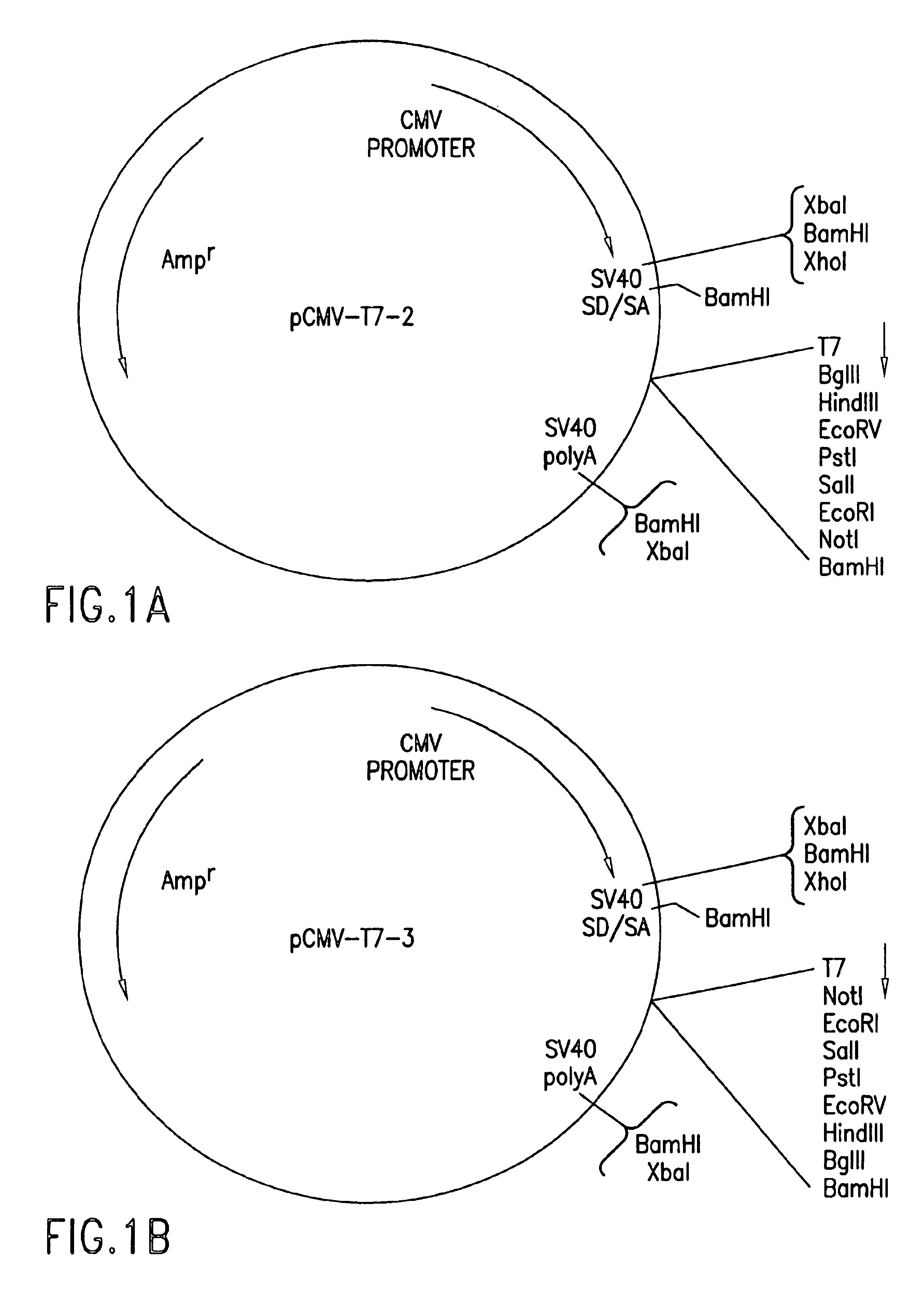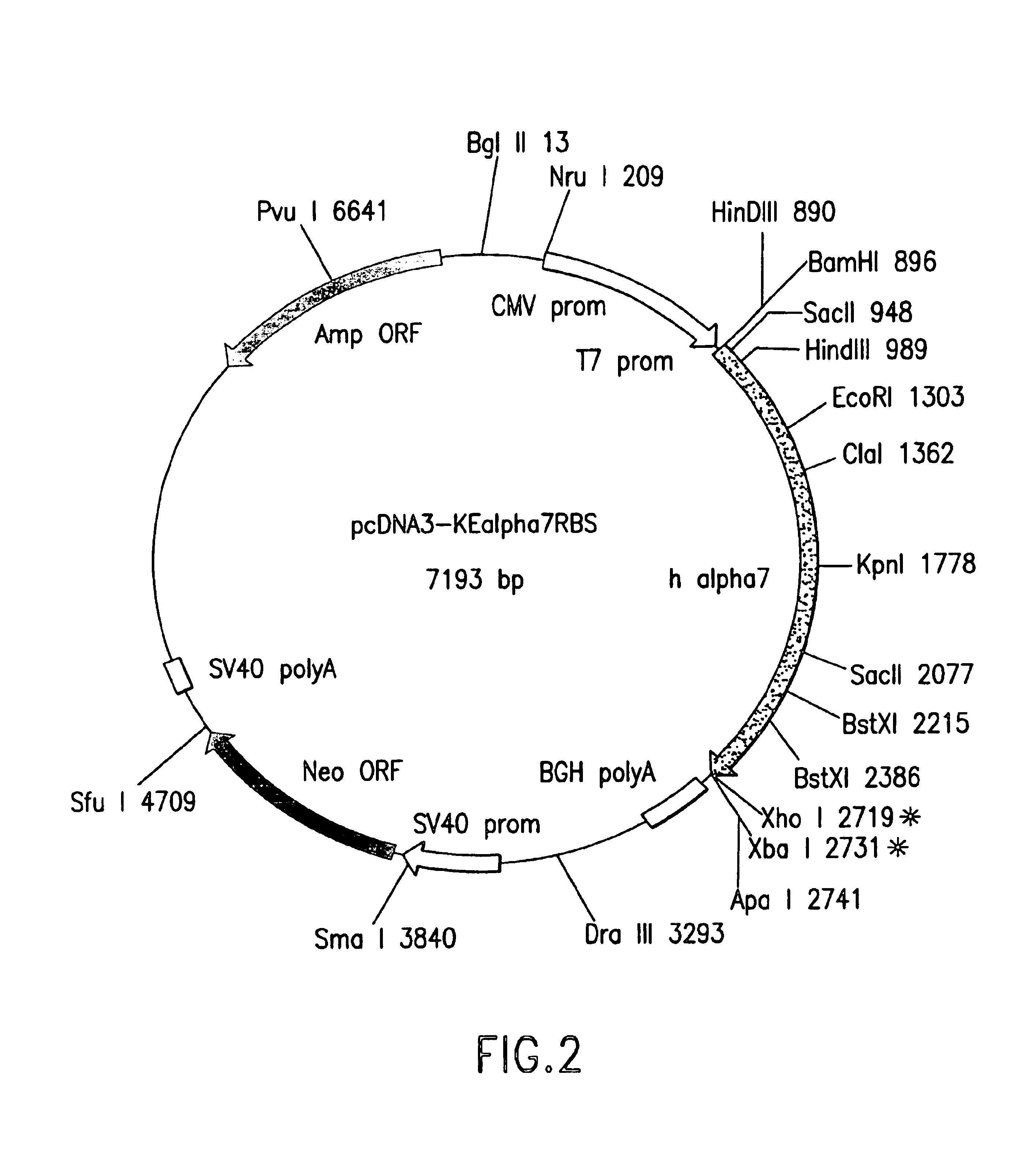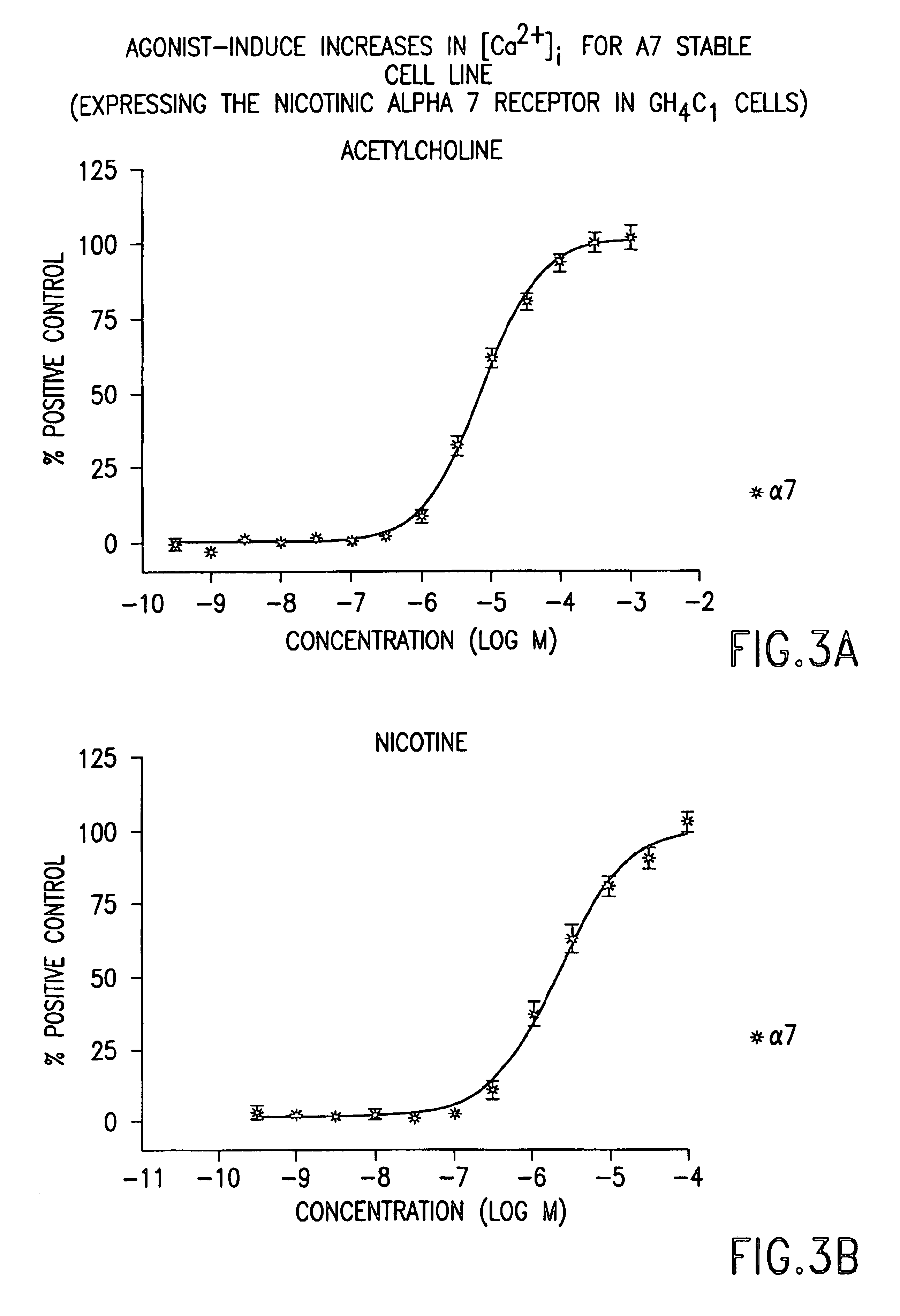DNA encoding human α and β subunits of neuronal nicotinic acetylcholine receptor, cells transformed therewith, and recombinant cell line expressing a human α and β subunit of neuronal nicotinic acetylcholine receptor
a technology dna, which is applied in the field of dna encoding cells transformed therewith, and recombinant cell lines expressing human and subunits of neuronal nicotinic acetylcholine receptor, can
- Summary
- Abstract
- Description
- Claims
- Application Information
AI Technical Summary
Benefits of technology
Problems solved by technology
Method used
Image
Examples
example 1
Isolation of DNA Encoding Human nNAChR Subunits
A. DNA Encoding a Human nNAChR β4 Subunit
[0147]Random primers were used in synthesizing cDNA from RNA isolated from the IMR32 human neuroblastoma cell line (the cells had been treated with dibutyryl cAMP and bromodeoxyuridine prior to constructing the library). The library constructed from the cDNAs was screened with a fragment of a rat nicotinic AChR β4 subunit cDNA. Hybridization was performed at 42° C. in 5×SSPE, 5× Denhardt's solution, 50% formamide, 200 μg / ml herring sperm DNA and 0.2% SDS. Washes were performed in 0.1×SSPE, 0.2% SDS at 65° C. Five clones were identified that hybridized to the probe.
[0148]The five clones were plaque-purified and characterized by restriction enzyme mapping and DNA sequence analysis. The insert DNA of one of the five clones contained the complete coding sequence of a β4 subunit of a human nicotinic AChR (see nucleotides 87-1583 of SEQ. ID. No:11). The amino acid sequence deduced from the nucleotide s...
example 2
I. Preparation of Constructs for the Expression of Recombinant Human Neuronal Nicotinic AChR Subunits
[0155]Isolated cDNAs encoding human neuronal nicotinic AChR subunits were incorporated into vectors for use in expressing the subunits in mammalian host cells and for use in generating in vitro transcripts of the DNAs to be expressed in Xenopus oocytes. Several different vectors were utilized in preparing the constructs as follows.
A. Construct for Expression of a Human nNAChR α3 Subunit
[0156]DNA encoding a human neuronal nicotinic AChR α3 subunit was subcloned into the pCMV-T7-2 general expression vector to create pCMV-KEα3. Plasmid pCMV-T7-2 (see FIG. 1) is a pUC19-based vector that contains a CMV promoter / enhancer, SV40 splice donor / splice acceptor sites located immediately downstream of the promoter, a T7 bacteriophage RNA polymerase promoter positioned downstream of the SV40 splice sites, an SV40 polyadenylation signal downstream of the T7 promoter, and a polylinker between the T...
example 3
Expression of Recombinant Human Nicotinic AChR in Oocytes
[0163]Xenopus oocytes were injected with in vitro transcripts prepared from constructs containing DNA encoding α3, α7, β2 and β4 subunits. Electrophysiological measurements of the oocyte transmembrane currents were made using the two-electrode voltage clamp technique (see, e.g., Stuhmer (1992) Meth. Enzymol. 207:319-339).
1. Preparation of in vitro Transcripts
[0164]Recombinant capped transcripts of pCMV-KEα3, pCMV-KEβ2, KEβ4.6 / pGEM and pCMV-KEβ4 were synthesized from linearized plasmids using the mCAP RNA Capping Kit (Cat. #200350 from Stratagene, Inc., La Jolla, Calif.). Recombinant capped transcripts of pCMV-KEα7, pCMV-KEα7.3 and Hβ2.1F were synthesized from linearized plasmids using the MEGAscript T7 in vitro transcription kit according to the capped transcript protocol provided by the manufacturer (Catalog #1334 from AMBION, Inc., Austin, Tex.). The mass of each synthesized transcript was determined by UV absorbance and the...
PUM
 Login to View More
Login to View More Abstract
Description
Claims
Application Information
 Login to View More
Login to View More - R&D
- Intellectual Property
- Life Sciences
- Materials
- Tech Scout
- Unparalleled Data Quality
- Higher Quality Content
- 60% Fewer Hallucinations
Browse by: Latest US Patents, China's latest patents, Technical Efficacy Thesaurus, Application Domain, Technology Topic, Popular Technical Reports.
© 2025 PatSnap. All rights reserved.Legal|Privacy policy|Modern Slavery Act Transparency Statement|Sitemap|About US| Contact US: help@patsnap.com



